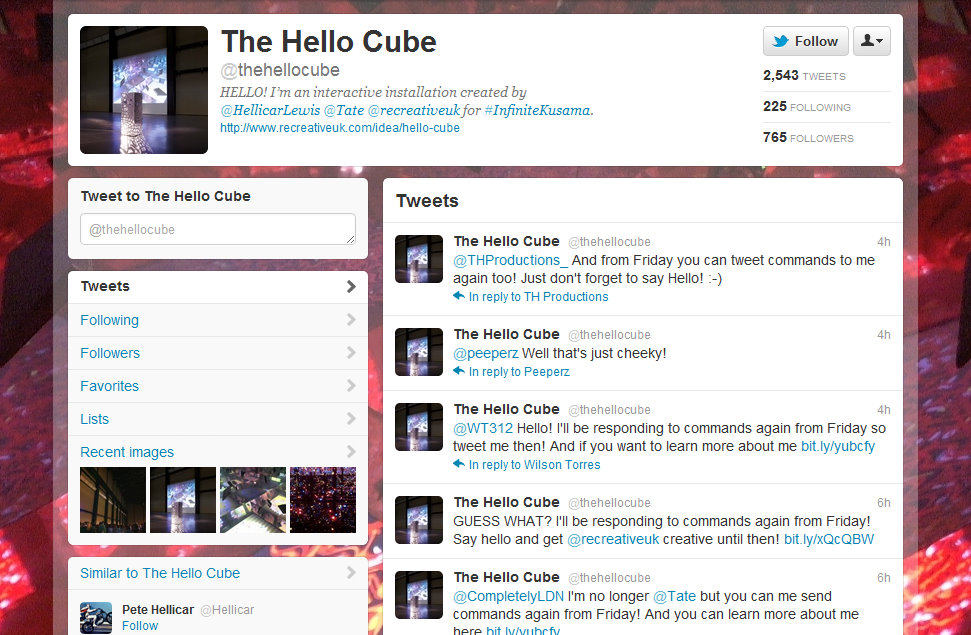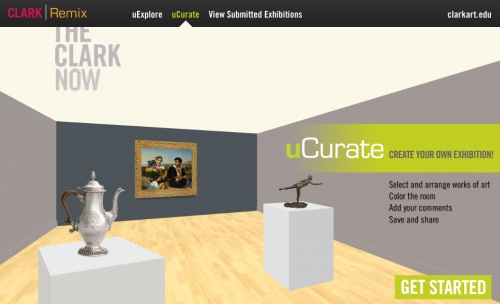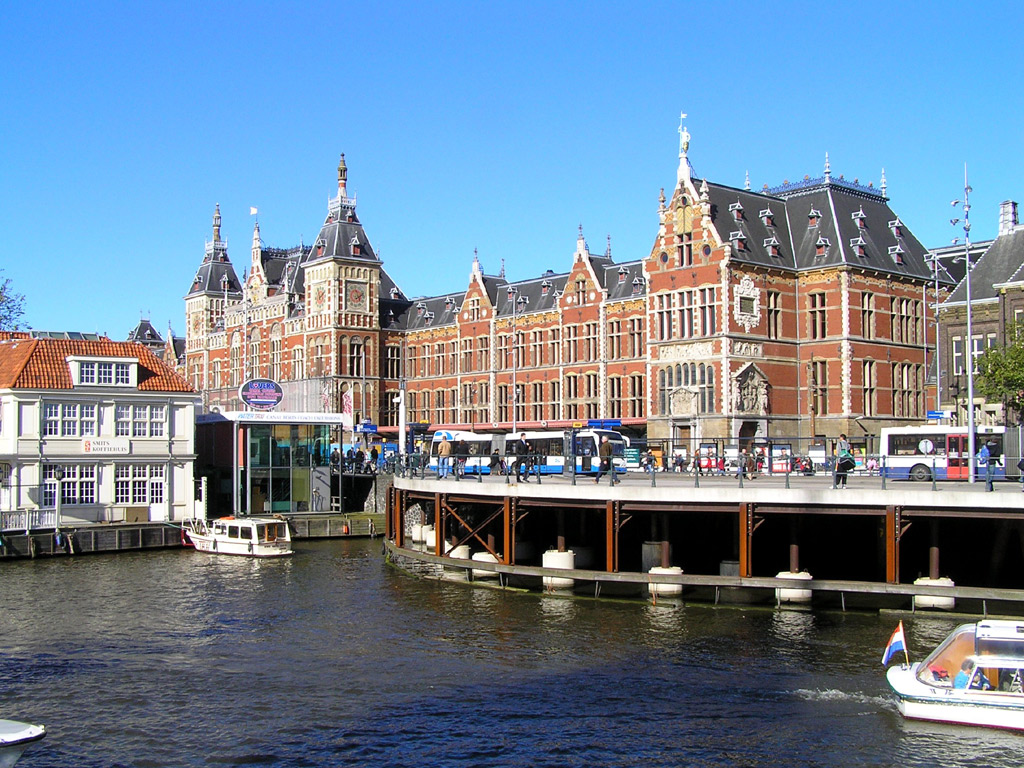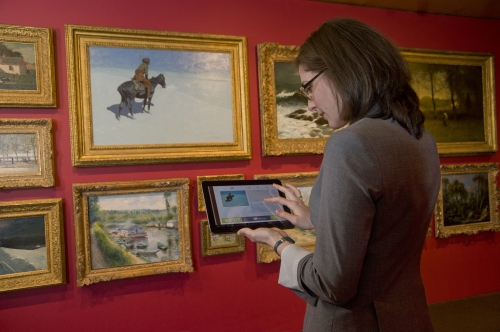If you told the average San Francisco resident 40 years ago that the art scene in the Bay Area would be gasping for life in 2015, they probably would have laughed in your face. But it is 2015, and that is the reality we are facing. The tech giants have moved in, and tension is building between the Silicon Valley community and its non-profit entities. In particular, arts organizations seem to be at an extreme disadvantage for a few reasons:
CREATE Lab: Creating Social Impact Through Empowering Communities
CREATE Lab creates multi-disciplinary learning experiences that allow communities to become technologically fluent. CREATE Lab’s novel combinations of visual arts and technologies provide a wealth of new potential tools to arts administrators and their organization. This article will introduce a few of the exciting projects that CREATE Lab is already testing in the Pittsburgh community, as well as access points for administrators and educators who are interested in implementing them.
Research Update 1: How Technology Supports Collaborative Artistic Projects
Picture a producer preparing for the upcoming world premiere Contemporary Color, “a pep rally pop music mashup.” Conceived by David Byrne and commissioned by Luminato Festival and Brooklyn Academy of Music, Contemporary Color will bring together artists such as Nelly Furtado, St. Vincent, and Ira Glass, 350 performers, and a 15 piece band for its world-premiere performance in Toronto this summer. Not only are the artists, performers, and musicians all located in different cities across North America, great distances also separate the designers, technicians, and other producers. To coordinate the project across these distances, the producer relies on online collaborative tools to orchestrate the project from pre-production to post-production.
Attendance Trends: A Case for Technology in Museums
How Museums Are Dealing With New Media Art: Part 1
When talking about new media art, there is no single definition. According to a 2001 research study by the Rockefeller Foundation, media artworks can be defined according to nine common elements: fluidity, intangibility, liveness, variability, replicability, connectivity, interactivity, computability, and chance. New media art is a very general and broad category and includes many subcategories. Among these, net art, digital art and plurimedia art are the most common within the visual art field. Nevertheless, the meaning of new media is constantly evolving.
Promoting Digital Media Art through Digital Media tools
In our technology-stuffed world, the difficulties faced by video artists seem paradoxical. Due to high up-front costs, and the difficulty of handling and selling digital technologies, established institutions such as art galleries and museums often shun their work. Artists may look at the entertainment industry as an alternative, but find themselves unfulfilled, as musicians typically come first in these sorts of collaborations.
The Hello Cube at the Tate Modern: A Tweetable Installation
An interactive installation at the Tate Modern caused a wave of twittering and tweeting this past weekend. People often tweet about artworks but can one tweet at an artwork? And will the artwork tweet back? The Hello Cube, an interactive installation at the Tate, answered all of the above in no more than 140 characters. Even more twitterrific was how the dynamic installation continually changed its patterns and colors in response to individual tweets.
 The Hello Cube was the centerpiece for the Infinite Kusama Project, which centered on engaging younger audiences (ages 16-25) with Kusama’s work. Described as “a day of the immersive, the hallucinatory, and the expansive,” the project consisted “of a range of workshops designed to take you closer to Kusama's distinctive visual universe.”
The Hello Cube was the centerpiece for the Infinite Kusama Project, which centered on engaging younger audiences (ages 16-25) with Kusama’s work. Described as “a day of the immersive, the hallucinatory, and the expansive,” the project consisted “of a range of workshops designed to take you closer to Kusama's distinctive visual universe.”
The installation got its very own twitter account where users were prompted to tweet at it with commands such as “red love pixelate” or “blue cells faster." I got a tweet response from The Hello Cube within seconds, accompanied by an image of the compositional changes that had occurred in its mirrored inside due to my somewhat imperative commands! Over the course of the weekend, The Hello Cube obliged several thousand tweeters/Kusama enthusiasts, always replying with additional commands that they could try, and created a sense of involvement regardless of, say, the number of miles between Pittsburgh and London!
For those at Tate Modern, the experience was far more insightful; not only did they get to see an amazing Kusama exhibition but they were in physical proximity of The Hello Cube! Besides being able to view the installation's constantly changing interior dynamics that were projected onto an adjacent wall, visitors could also interact with The Hello Cube by saying their hellos or anything else they thought fit to share with the cube (besides tweets, it was programmed to respond to external stimuli such as sound or voices).Visitors could even place their hands inside the cube and see their arm reflected unto infinity!

Hellicar and Lewis, the creators of The Hello Cube, describe it as “an installation that exists as a sculptural object that you can look inside, see patterns, and an infinity of reflections.” It takes inspiration from Kusama’s work titled The Passing Winter, but as noted by its creators, it differs from Kusama’s work in that it is capable of responding to people and to its environment.
The work of Hellicar and Lewis has been featured at The Creators Project and the duo are “interested in creating groundbreaking experiences that use art, technology and design to take people into the moment and impart lasting memories.” In an interview, they noted how they had undertaken a similar project in the past called The Hello Wall, a dynamic outdoor installation where users could control the projections on an external wall in Wembley by tweeting at it.
While Hellicar and Lewis have used Twitter's real time capabilities to foster a dynamic perpetuity and engagement that is both brilliant and unprecedented, the creation of Twitter personas for artworks in itself is intriguing. On Twitter, the inanimate, the intangible, and even the immortal can all lay claim to accounts; San Francisco’s Fog, the Bronx Zoo Cobra, and Voldemort are all suspiciously active! So why can’t art transcend notions of the self, at least on social media? Thus, not only was The Hello Cube an incredibly interactive installation, but its presence on Twitter essentially transformed it into an anthropomorphic object, increasing its accessibility in both a literal and psychological sense.

It would surely make an interesting experiment to see how people interacted with a painting were it to have a twitter account. Wouldn't it be fun if museums created Twitter personas around special exhibitions? What would Rembrandt tweet? How about an account for Abstract Expressionism? Of course, these accounts may have to be temporary but a lot could be learned in a series of short bytes of information. One sees a considerably twitterable future.
For now, we have the delightful The Hello Cube, which having been removed from the Tate, bade farewell to its visitors and declared that it was ‘time for a cube to enjoy the sunshine...” Of late, it was tweeted that The Hello Cube will once again start taking commands this Friday, but as the installation politely requests: "Just don't forget to say Hello!"
Engaging Technology: uCurate and uExplore at the Clark
What’s going on at the Sterling and Francine Clark Institute in Williamstown, Massachusetts? Let’s see, there are iPads, tablets, interactive digital programs, touchscreens and kiosks throughout the galleries, the new exhibition, Clark Remix, and oh yes, new curators- YOU.
In a February press release, the Clark announced its exciting new initiative to encourage visitor interaction and participation in its galleries. According to the press release, Clark Remix is "a dynamic salon-style installation featuring some 80 paintings, 20 sculptures, and 300 of the institute’s finest examples of decorative arts."
programs, touchscreens and kiosks throughout the galleries, the new exhibition, Clark Remix, and oh yes, new curators- YOU.
In a February press release, the Clark announced its exciting new initiative to encourage visitor interaction and participation in its galleries. According to the press release, Clark Remix is "a dynamic salon-style installation featuring some 80 paintings, 20 sculptures, and 300 of the institute’s finest examples of decorative arts."
As part of the exhibit, the Clark has introduced the interactive, digital programs uExplore and uCurate. Both programs are accessible online, on the visitor’s own personal device, on touchscreens and kiosks throughout the gallery and on iPads and tablets provided by the Clark for use in the museum. Basically, the programs are EXTREMELY accessible and user friendly- I myself have spent all afternoon here in Pittsburgh exploring the Clark’s collection and building my own exhibition, instead of reading for class (ahh priorities).
The Director of the Clark, Michael Conforti explains the premise of Clark Remix,
Clark Remix represents one of many programs that the Clark is developing to engage audiences in exciting ways. Clark Remix allows us to present our permanent collection in an installation that is both beautiful and innovative. Our salon-style presentation provides a very different and intriguing perspective on many of the works that have become familiar favorites for Clark visitors. Adding virtual components to the exhibition allows us to reach new audiences and invite them to discover and interact with our collection.
It works like this. uExplore allows the visitor to learn more about the Clark’s collection in a visually stimulating, highly organized, and digitally oriented way. Items are grouped into categories (paintings, sculpture, glass silver and ceramics) to allow the user to navigate with ease through the extensive collection. Selecting an image of the desired object, a more detailed, but not overwhelming, explanation of the item becomes available. When appropriate, audio and video clips accompany the information.
It is a beautifully designed and easily navigable interface. uExplore’s presence in the gallery encourages visitors to delve more deeply into the history of the collection, while they are on-site.
The second digital application to accompany the exhibit, uCurate, gives visitors the opportunity to participate in the curatorial process. As the name implies, YOU, aka the visitor, plan and design a 3D virtual exhibition with the Clark’s collection. The participant makes all decisions, from what to include and how to arrange
the objects, to wall color selection and wall text. Users of the program have the option to submit their designs for consideration by Clark’s curatorial team AND to share their designs through social media channels (promoting the museum and the digital program). Submissions to the Clark will be reviewed regularly. Why submit your design for professional review by Clark curators? Because if selected, the virtual design will be transformed into an actual exhibition! The lucky designers will be invited to assist in their exhibition’s installation, in the decision-making process, in the creation of wall text and in writing the curator’s statement.
uCurate and uExplore were designed by the Clark in collaboration with Swim Design Consultants and Virtual Gallerie to afford the public a voice and role in the museum’s exhibition planning process. Allowing the public to suggest actual designs for implementation challenges what has been the accepted and traditional decision-making process in the museum. That is, all decisions are made internally; the public only receives, not contributes. But the Clark is trying something different. In a recent New York Times' article on the Clark’s innovative crowd-sourcing approach, Conforti said,
For generations, curators ran the show and told you what to believe. In a world of blogging and Wikipedia, we realized that we can learn from our audience, and from multiple interpretations.
This is Museum 2.0 in action. Where visitors become users and museums become, as Nina Simon explains, “dynamic platforms for content generation and sharing.”
for content generation and sharing.”
So Kudos to you, Clark Museum. This is an engaging and relevant use of technology where the user AND museum win.
PIPS:lab Diespace, Interactive Multimedia Experience
PIPS:lab recently made its US debut during a festival featuring Dutch artists here in Pittsburgh. The Amsterdam group has been performing together for about a dozen years. The work that they performed was categorized as absurdist media theater and was a short evening length work without intermission. The use of technology for this performing group is integral. The performance itself was noteworthy for its innovation on a number of different levels. It is worth noting, however, the problems that PIPS:lab had in functionally executing the performance due to glitchy technology. The performance, Diespace, was essentially an introduction to a fictional new social network site that audience members were encouraged to visit after they die (or die in order to visit). The actors polled the audience about their opinions regarding whether or not there is life after (or before, humorously) death. These polls were conducted with a cool audience participation tool of light capture setup where the audience essentially wrote on a screen upstage.
The other insertion of tech into the performance involved video/audio remixes of various clips taken of audience member during and before the show. These clips were then edited in real time into the performance. This, in turn, served to engage the audience but through a pretty controlled format. The display of the video and audio taken from the audience drew laughter and made the audience excited and was a high point of the performance lending to greater investment from the collective. Additional audience participate was to be had through a lottery during the show where the faces of the audience were put into a virtual tumbler on the screen upstage. Three audience members won prizes with the grand prize being a premium account for Diespace (which included significant stage time for the audience member who won it).

The performance unfolded at a relatively brisk pace with musical interludes to cover moments where the technology and content was being prepped. The problem with this was that the performers ended up being a bit un-invested in the music and as a result it was hard to be carried away by the performance. It was easy to check out during these scenes through the distractions on stage. It was the sense of this reviewer that there was only one true musician on stage, a fact that was born out by the program notes about the artists backgrounds.
At least three times during the performance there were loud warnings of a computer crash each time forcing the performers on stage to repeat a few moments to a few minutes of the action. This in turn lent to a stutter stop feel to the performance. Execution of Diespace did not look like it was easy and to be certain what PIPS:lab is trying to do is not easy in general. They deserve applause for attempting to stitch together so many constituent elements in the moment. It was fascinating at times to see the failures of the technology and there was rarely a moment where the audience did not have something that they could try to be engaged in. The relative successes and failures of this performance reinforce the point that some technologies have a ways to go before they are both accessible to independent performing artists.
The innovation of groups like PIPS:lab hopefully will be the wave of the future and it is gratifying to see media artists take the stage with musicians and actors. The combination of talents of stage was a rich soup and Diespace was a valuable experience for the insights that it gave with regards to generation of true multi-disciplinary live work.
Public Financing for the Arts in Europe Takes a Hit
 Tell me if you have heard this one before.
In the midst of an economic downturn, a country desperately searches for cuts in spending anywhere it can, as calls for budget austerity grow louder. In the end, it’s the more vulnerable programs that are hit the hardest, which often includes education programs, safety net measures, and the arts community.
Tell me if you have heard this one before.
In the midst of an economic downturn, a country desperately searches for cuts in spending anywhere it can, as calls for budget austerity grow louder. In the end, it’s the more vulnerable programs that are hit the hardest, which often includes education programs, safety net measures, and the arts community.
While that above paragraph would describe the arts community in the United States in recent years, the trend is now playing out across Europe as debt-ridden countries turn to austerity measures in the face of the European debt crisis. While European countries spend significantly more on the arts than we do in the United States, the dangers of budget austerity in the coming years for the arts community in several European countries are very, very real.
I have been thinking a lot about this issue of arts funding in Europe vs. the United States over the past week, and two events in particular heightened my interest. First, this past Friday, we sponsored a Carnegie Mellon Master of Arts Management Speaker Series event with the Consulate of the Netherlands, who were in town for the annual Dutch Festival in Pittsburgh. We started talking about the difference in the way the arts are funded in a country like the Netherlands versus the way it is funded here at home. More on that in a minute.
The other item that caught my interest was a front page story in the New York Times yesterday about the fate of public financing for the arts in Europe. As I mentioned above, Europe is now going through the same kind of austerity measures that rocked the United States in 2009: debt is growing, calls for fiscal restraint are getting louder, and every program is being measured for its return on investment and how important it is going forward.
The numbers are striking: as the New York Times reports, in the Netherlands, the budget for arts and culture is seeing a decrease of roughly $265 million, or 25 percent. In addition to those cuts, the public is being asked to pay more to see shows and events, with increased taxes on tickets.
These cuts are hitting smaller venues, troupes, and companies the hardest: with less funding to go around, existing expenditures are being targeted at more established performers, forcing more unique acts, which may be struggling for audiences, to face an uncertain future.
And while some may feel that cuts to the arts in Europe would have little effect on the arts here in the United States, one of the expenses artists in Europe are cutting back on are trips and performances overseas, to countries like the United States. Artists are cancelling trips and forcing festivals to find alternative performers.
Another effect this is going to have on the American arts community is over the issue of fundraising. As we discussed with the Consulate of the Netherlands on Friday, there are different views towards art funding in Europe than there are here. In a country like the Netherlands, a resident pays higher taxes to pay for additional services like health care, transportation, and safety net measures. Another element of those increased taxes is funding for the arts; with the government taking a higher percentage out of every paycheck, many Dutch residents feel they are less inclined to donate their own money to the arts because they feel like the government is already doing it for them.
Here in the United States, the opposite is true: the National Endowment for the Arts (NEA) receives such a small percentage of overall government revenue (usually in the range of $150-160 million, compared to billions of dollars in several European countries) that the vast majority of funding for the arts comes from donations from individuals. Since Americans are taxed at a much lower rate, they have more disposable income, and thus more free to donate it to the art of their choosing. There are issues of whether a lot of this money is really going to where it is needed, but that is a discussion for another day.
With European governments cutting back on their arts funding, this is naturally going to lead to artists in Europe to seek alternative sources of revenue. As the New York Times explains, this includes going after their descendents currently living in America – who may be already donating to arts organizations in their communities.
So this presents a problem: a global recession and austerity measures in dozens of countries, all leading to a shift in the way arts are funded worldwide. It will lead to more uncertainty, a greater dispersion of artistic funding and increased competition for the individuals who provide a sizeable percentage of giving.
Is the current model, where American artists rely mostly on private donations and European artists rely on government grants, sustainable? For the United States, absolutely. With calls from some politicians to cut and even eliminate funding for the NEA and other culture programs, there is certainly little chance of seeing an increase in federal funds for the arts.
As for Europe? That is a different story. As the story goes, as the pond gets smaller (in this case, the pond symbolizing the amount of funding), the fish will get nervous, and perhaps seek refuge elsewhere, in the form of spending more of their time fundraising, at the expense of the very same art they are seeking to promote. With artists now having to listen to potential funders, who may have a different vision for what kind of art they want to see, the impact on what kind of art is made and performed is bound to be substantial.
In the short term, the effect is obvious: less festivals, traveling art troupes, and shows. Fewer jobs for artists in countries like Italy, Hungary, Netherlands and Greece. Fewer opportunities for tourists and residents to see the best of what each of these countries has to offer.
It really is sad, but perhaps unavoidable. As I have written before, we seem to find ourselves in the era of budget austerity, and even while the economy has shown signs of improvement in recent months, the desire to increase funding for the arts pales in comparison to support for other existing programs.
The promise and benefit of increased funding for the arts, both at the private and federal level, is well known to all readers of this blog. The New York Times piece describes Europe as the place “where art is life,” and while that is certainly true to anyone who has visited, the newfound austerity measures being put in place represent a significant threat to that very same life going forward.











